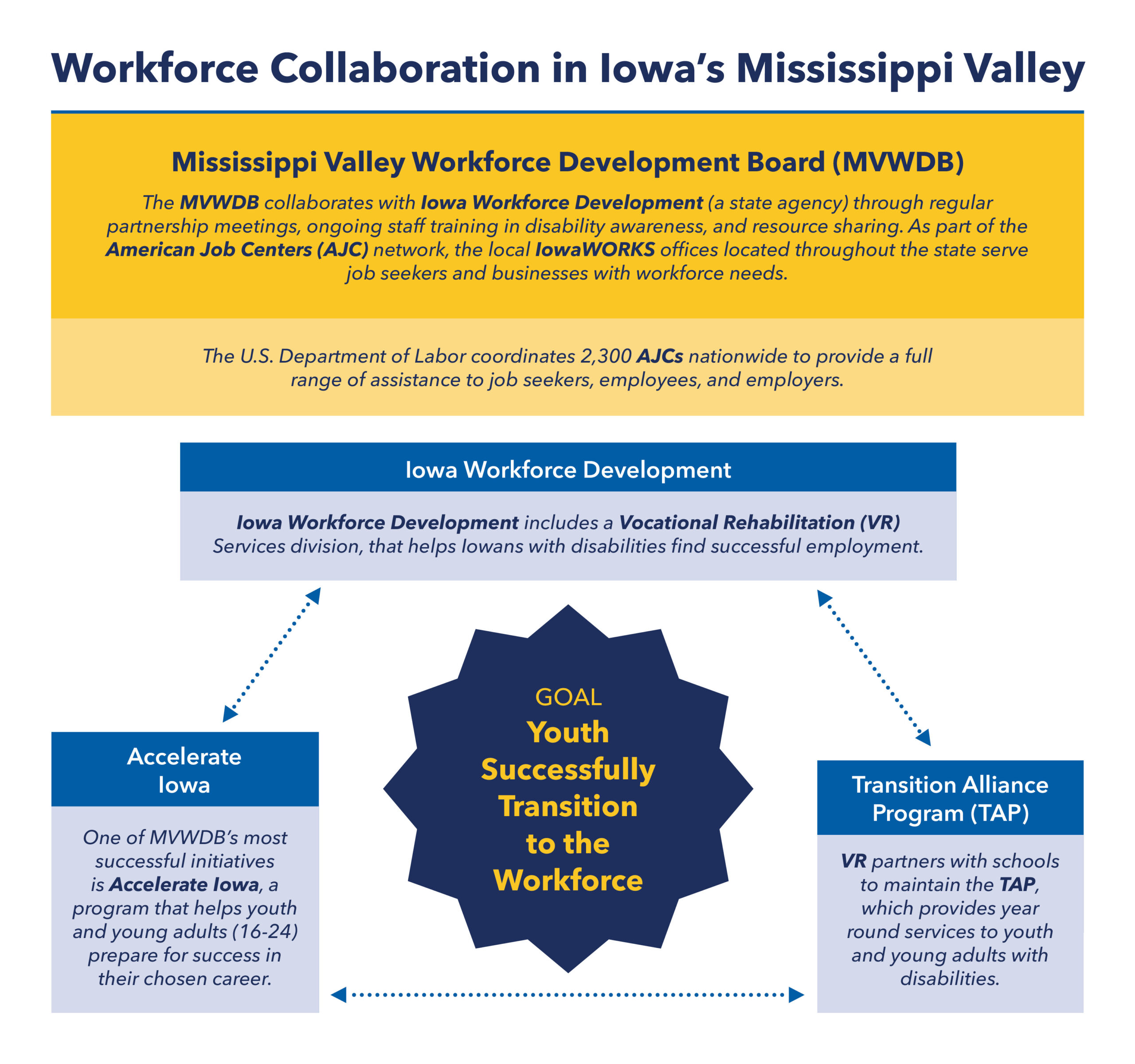By Abeer Sikder, JD
October is National Disability Employment Awareness Month (NDEAM), an annual celebration of the contributions of America’s workers with disabilities. In honor of this year’s theme, “Access to Good Jobs for All,” the Office of Disability Employment Policy’s Center for Advancing Policy on Employment for Youth (CAPE-Youth) is highlighting an innovative Massachusetts Commission for the Blind (MCB) program that provides youth and young adults with disabilities (Y&YAD) access to high-quality employment experiences.
In 2003, MCB Commissioner John Oliveira, the organization’s Director of Staff Development at that time, piloted MCB’s Summer Internship Program for two college students to respond to a pressing need. “We observed many of our consumers graduate from high school and college with little to no work experience, which was impacting their job readiness,” he says.
The pilot grew into a statewide Summer Internship Program, which provides competitive work-based learning (WBL) opportunities aimed at developing real-world skill sets for young adults who are blind or have low vision. Today, MCB facilitates in-state and out-of-state internships, both in-person and virtual, for not only high school seniors and college students, but also adult job seekers reentering the workforce.
Since the Summer Internship Program’s inception, MCB has:
- Provided approximately 900 internships in collaboration with more than 400 employers.
- Placed an average of 90 students into internships annually.
- Set more than 70 percent of interns on track for permanent employment after program completion.
Employer Engagement
Inclusive internship programs offer Y&YAD opportunities to evaluate different careers while providing employers with new prospective candidates. Through its Summer Internship Program, MCB places interns in various fields, including government, human services, computer science, and education. Employer partners include National Braille Press, the Secretary of the Commonwealth of Massachusetts, and Bay Cove Human Services.
To start, MCB counselors pair interns with employers and mentors who guide them during job searches. Counselors also help participants explore career opportunities, which have included job shadowing attorneys, working at radio stations, attending space camps, or hiking the Grand Canyon as part of their leadership development programming.
MCB also collaborates with employers to increase participant success. For example, MCB’s sensitivity training helps employers and mentors understand how to support interns. The training focuses on disability inclusion standards for all staff and specific training for supervisors. MCB also works with workplace information technology teams to integrate assistive technology.
Support Services
Research shows that support services foster successful WBL experiences for Y&YAD, so MCB offers interns a variety of them. One example is orientation and mobility training, which helps participants improve their confidence in new environments, manage their disability in the workplace, and internalize key skill sets.
During their internships, students continue to receive support from MCB and access to its vocational rehabilitation services. MCB also provides a $1,000 stipend to interns not paid by their employer to help cover transportation, clothes, and meals.
MCB provides additional opportunities for interns to engage in empowerment and mentorship, including:
- A youth council that helps develop self-advocacy skills with a community of peers.
- “Blind-to-blind” mentorships that connect interns to experienced professionals who are blind or have low vision. Mentors guide interns in navigating office politics, career outcomes, and more.
Soft Skills
Teaching soft skills to Y&YAD can promote self-confidence, maintain employment, and increase job satisfaction. Reflecting this, MCB provides soft skills training to participants before and during their internships to help them succeed and prepare for their next move.
“This training helps interns get those intangibles right … with interpersonal skills development to encourage emotional intelligence,” says MCB Director of Programs and Services and former intern Joe Buizon.
This includes training on job searches, networking, and interviews. A unique aspect of MCB’s soft skills training is helping interns figure out how to disclose their disability to employers.
Over the last few years, MCB translated its soft skills training into a virtual format. Oliveira says telework has made reasonable accommodations “mainstream” to help avoid travel-related issues. MCB offers virtual, in-person, and hybrid options based on an individual’s preference for orientation, training, and placement.
A Model for Good Jobs in Massachusetts and Beyond
WBL experiences such as MCB’s Summer Internship Program play a significant role in helping Y&YAD engage with employers, seek support services, and gain soft skills to access good jobs.
“MCB’s internship program is a national model that’s being utilized throughout the entire country with different vocational rehabilitation agencies,” Buizon says. “The program has been discussed at National Council of State Agencies for the Blind meetings. Throughout its development … we ensured other agencies were informed about the program’s progress.”
On that front, MCB’s Summer Internship Program also supports developed by the U.S. Departments of Commerce and Labor Good Jobs Principles:
- Paying interns through an employer or a stipend that covers associated costs of internships.
- Offering extensive wraparound supports that connect interns to individuals who are legally blind or visually impaired to boost interns’ confidence in the workplace.
- Building a foundation for success by focusing on long-term employability, soft skills, and diverse career exploration.
Buizon also emphasizes that most interns are enrolled in Pre-Employment Transition Services, which vocational rehabilitation agencies and schools are required to provide under the Workforce Innovation and Opportunity Act. Due to its success, MCB’s Summer Internship Program can serve as an example for other states to meet this requirement through meaningful WBL opportunities that increase access to good jobs for all .

